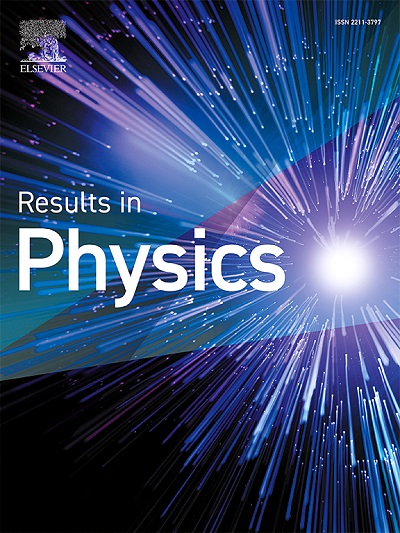Multi-level DLD microfluidic chip for plasma separation: A novel approach using Cu-ACE
IF 4.4
2区 物理与天体物理
Q2 MATERIALS SCIENCE, MULTIDISCIPLINARY
引用次数: 0
Abstract
This paper presents the design and fabrication of an innovative microfluidic chip inspired by the intricate mechanism of fish gills. The main objective of this study is to develop an efficient microfluidic chip for the selective separation of blood plasma. To this end, numerical simulations in COMSOL Multiphysics software have been employed to optimize geometric and operational parameters, thereby achieving optimal separation efficiency. The fabrication of this chip employed the copper-assisted chemical etching (Cu-ACE) technique, resulting in the formation of a well-ordered array of crescent-shaped micro holes on a silicon wafer. The micro holes were molded using polydimethylsiloxane (PDMS), resulting in the production of PDMS pillars in a deterministic lateral displacement (DLD) structure. These filters were integrated into a copper reservoir with a depth of 10 μm, then strong bond between the PDMS structure and copper substrate was established using a new self-assembled silane layer. To assess the surface morphology and quality of the fabricated structures, field emission scanning electron microscopy (FE-SEM) and optical microscopy (OM) were utilized to observe the separation of the cells from the plasma. A hemocytometer was provided to determine the purity percentage for validation and assessment of the results. The results indicated that the adhesion between PDMS and copper is acceptable. Additionally, the crescent-shaped pillars have an efficient effect on the separation, achieving a plasma purity of 98 % from experimental test.

用于等离子体分离的多级DLD微流控芯片:一种基于Cu-ACE的新方法
本文介绍了一种创新微流控芯片的设计和制造,其灵感来自鱼鳃的复杂机制。本研究的主要目的是开发一种用于选择性分离血浆的高效微流控芯片。为此,利用 COMSOL Multiphysics 软件进行了数值模拟,以优化几何和操作参数,从而达到最佳分离效率。该芯片的制造采用了铜辅助化学蚀刻(Cu-ACE)技术,从而在硅晶片上形成了有序的新月形微孔阵列。使用聚二甲基硅氧烷(PDMS)对微孔进行模塑,形成确定性横向位移(DLD)结构的 PDMS 柱。这些滤波器被集成到一个深度为 10 μm 的铜容器中,然后利用新的自组装硅烷层在 PDMS 结构和铜基底之间建立了牢固的粘合。为了评估所制备结构的表面形态和质量,利用场发射扫描电子显微镜(FE-SEM)和光学显微镜(OM)观察细胞与等离子体的分离情况。为验证和评估结果,还提供了血细胞计数器来确定纯度百分比。结果表明,PDMS 和铜之间的粘附性是可以接受的。此外,新月形柱对分离具有有效的作用,实验测试的血浆纯度达到 98%。
本文章由计算机程序翻译,如有差异,请以英文原文为准。
求助全文
约1分钟内获得全文
求助全文
来源期刊

Results in Physics
MATERIALS SCIENCE, MULTIDISCIPLINARYPHYSIC-PHYSICS, MULTIDISCIPLINARY
CiteScore
8.70
自引率
9.40%
发文量
754
审稿时长
50 days
期刊介绍:
Results in Physics is an open access journal offering authors the opportunity to publish in all fundamental and interdisciplinary areas of physics, materials science, and applied physics. Papers of a theoretical, computational, and experimental nature are all welcome. Results in Physics accepts papers that are scientifically sound, technically correct and provide valuable new knowledge to the physics community. Topics such as three-dimensional flow and magnetohydrodynamics are not within the scope of Results in Physics.
Results in Physics welcomes three types of papers:
1. Full research papers
2. Microarticles: very short papers, no longer than two pages. They may consist of a single, but well-described piece of information, such as:
- Data and/or a plot plus a description
- Description of a new method or instrumentation
- Negative results
- Concept or design study
3. Letters to the Editor: Letters discussing a recent article published in Results in Physics are welcome. These are objective, constructive, or educational critiques of papers published in Results in Physics. Accepted letters will be sent to the author of the original paper for a response. Each letter and response is published together. Letters should be received within 8 weeks of the article''s publication. They should not exceed 750 words of text and 10 references.
 求助内容:
求助内容: 应助结果提醒方式:
应助结果提醒方式:


